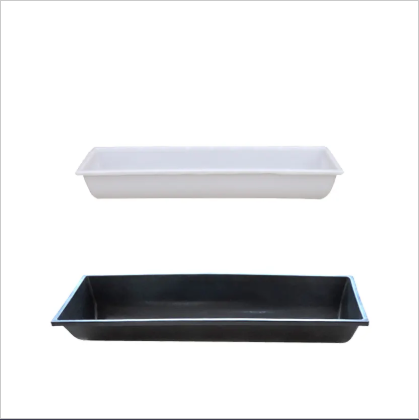Understanding Custom Solutions in Sheep Equipment
Challenges of One-Size-Fits-All Farm Tools
Generic farm tools just don't cut it when dealing with all the different sheep breeds out there. Farmers know this well since every breed brings its own set of characteristics and needs to the table. Take Merino versus Dorset for instance. What works great for fine wool production might struggle with the tougher handling demands of Dorsets. When equipment isn't matched properly, things start falling apart fast. Labor hours go up as workers compensate for poorly fitting gear, while productivity takes a hit across the board. That's why many savvy farmers invest in customized solutions built specifically for their operation. These specialized tools do more than simply work better they actually transform how farms run day to day, cutting down on those frustrating mid-season modifications everyone dreads and ultimately making money where it counts most.
Identifying Unique Flock Requirements
Knowing what kind of flock they have makes all the difference in managing sheep properly. Each breed acts differently, has its own health concerns, and follows separate breeding patterns. When farmers get familiar with these variations, they pick out gear that really works for their particular group of sheep. Most experienced shepherds will tell anyone willing to listen that doing regular checkups on the flock and talking things over with other sheep people gives them valuable information. This kind of approach leads to better spending decisions on equipment so the tools actually fit what the animals need day to day. Take Suffolk sheep versus Finnsheep as an example. The feeding systems work totally differently between those two because one eats more roughage while the other prefers grains. Pay attention to these specifics and productivity goes up while keeping the animals healthy becomes much easier in practice.
Design Principles for Tailored Sheep Systems
Modular Components for Flexible Configurations
Modular components and flexible configurations form a key part of good sheep system design. Farmers can tweak their setup simply by adding or taking away parts as their flock management requirements shift over time. No need to spend big bucks on entirely new equipment whenever operations change direction. On farms where flock numbers fluctuate or seasons bring different demands, this kind of flexibility really matters. Being able to personalize the system without breaking the bank is why so many producers opt for modular designs when setting up their sheep management infrastructure.
Durability Considerations for Harsh Environments
When it comes to making gear for sheep in tough environments, how long it lasts matters a lot. The stuff we build needs to handle whatever Mother Nature throws at it, whether that's freezing cold or pounding rain, so farmers don't end up fixing things all the time. Galvanized steel works wonders here because it fights off rust better than most other metals. We've seen farms save money over years just by investing in durable materials upfront rather than constantly replacing broken equipment. Farmers appreciate knowing their tools will keep working through rough seasons without giving them headaches. Some old hands in the business swear by certain brands that simply outlast everything else, which makes sense when considering daily wear and tear on pastures and hillsides.
Ergonomic Features for Efficient Handling
Adding ergonomic features to sheep handling gear makes farm work much more efficient. When equipment reduces physical strain on workers, they get things done faster while staying safer from injuries. Farmers should look for adjustable height settings on gates and pens, equipment that's easy to move around pastures, and controls that make sense at a glance rather than requiring complex adjustments. These improvements really matter when moving large flocks across fields or processing animals regularly. For instance, shearing stations with proper back support can cut down on worker fatigue during long days. Good ergonomics isn't just about comfort it creates better systems overall where both performance and worker welfare stay top priorities on farms big and small.
By understanding and implementing these design principles, farmers and equipment manufacturers can work towards creating custom solutions that meet the unique needs of their sheep operations. This approach ensures that sheep equipment is not only functional but tailored to provide maximum efficiency, adaptability, and safety.
Implementing Customized Equipment Strategies
Assessing Existing Infrastructure Gaps
Getting new sheep handling systems to work well together requires looking carefully at what's already there. Farmers who take time to check how things currently operate often find spots where work flows get stuck, places where animals tend to slow down, or equipment that just doesn't mesh properly. Take modular additions for example - when added to an existing sheep yard (like some products from Te Pari), these can really boost performance without tearing everything apart and starting fresh. Doing this sort of evaluation makes it possible to upgrade strategically rather than spending money everywhere at once. Most importantly, each section of the farm gets better tailored to handle sheep efficiently, which saves time and reduces stress on both stock and staff during daily routines.
Phasing Implementation for Budget Management
When bringing new equipment onto the farm, money management becomes really important, and going step by step often works best for most growers. Spreading out purchases across several seasons helps keep cash flow from getting too tight all at once. Farmers find this approach gives them breathing room financially while still letting them focus their dollars where they matter most. Take irrigation systems for example many folks tackle those before buying newer tractors since water management directly affects crop yields. As different pieces of machinery get added over time, farmers actually get a chance to see what works and what doesn't fit their particular operation. This hands-on experience means adjustments can happen along the way without blowing through the whole budget or disrupting normal farm activities too much.
Training Staff on Specialized Systems
Getting good equipment for sheep management matters a lot, but it's not everything. The people who actually work with these machines need proper training too if they're going to get the most out of them. When farm staff really know how all the parts of these specialized systems work together, operations run smoother and faster. Take Te Pari's latest gear for example. Workers who understand what each button does and how different settings affect animal handling can save hours every day on routine tasks. Regular refresher courses keep everyone aware of new tech developments and better ways to handle sheep without stress. Most farmers find that when their team has solid hands-on experience with the equipment, they don't waste time figuring things out as they go along. That means better returns on those expensive custom systems installed across many modern farms today.
Case Studies: Successful Custom Sheep Solutions
High-Density Grazing System Adaptations
Dense grazing systems are changing how pastures get used because they work like nature does, which helps flocks stay healthier and produce better results. When farmers put more sheep into smaller areas and move them around often, the animals tend to eat grass more evenly across the land. Looking at actual farm data shows pretty impressive improvements too. Pasture growth comes back faster after being grazed this way, and weeds don't take over as much either. For many ranchers, these systems save money on buying extra feed since the land itself becomes more productive over time. That makes dense grazing not just good for the environment but also smart business sense for today's sheep producers who want both profit margins and sustainable practices.
Automated Feeding Systems for Large Flocks
Sheep farmers who have switched to automated feeding systems are finding these setups transforming their operations in big ways. The biggest benefit? Less money spent on labor since workers don't need to monitor feed as often. Plus, animals get fed at regular intervals every day, something that really matters when trying to keep those woolly critters growing properly. On farms where this tech has been installed, many owners notice around 30% less wasted feed compared to traditional methods. That kind of savings adds up fast. And what about the actual sheep? Their health tends to improve because they receive exactly the right nutrients each time. Better nutrition means fewer vet visits and healthier lambs, which ultimately makes the whole operation more profitable in the long run.
Climate-Specific Shelter Modifications
When building shelters for sheep, taking into account what kind of weather they'll face locally makes all the difference for both animal comfort and how productive the farm will be. Sheep get stressed out when exposed to extreme temperatures or bad weather, so proper shelter really matters for keeping them healthy and productive. Studies have shown that sheep with good shelter tend to reproduce better, which speaks volumes about why this matters so much. Farms that take time to design shelters specifically for their area find themselves better equipped to keep their flock safe from whatever Mother Nature throws at them. This attention to detail pays off in terms of healthier animals and higher yields across the board.
Future-Proofing Your Equipment Investments
Incorporating Smart Technology Upgrades
Smart tech integration into sheep farming gear has become a game changer for boosting productivity across farms. With sensors tracking everything from wool quality to grazing patterns, farmers can make on the spot changes that simplify day to day management tasks. Many operators have seen their bottom line improve after adopting these systems because they know exactly where to allocate resources like feed and water. The livestock equipment market keeps expanding worldwide, and IoT devices specifically are making waves in how farms operate today. While there's still room for improvement, these technologies help address immediate needs while laying groundwork for meeting tomorrow's challenges in sustainable agriculture practices.
Sustainable Material Selection Criteria
Choosing green materials for sheep gear matters more than ever these days. Farmers want to keep up with what customers expect while cutting down on carbon emissions and building that eco-friendly reputation too. Going green isn't just good for the planet anymore it actually gives farms an advantage in today's market where people care about where their food comes from. Many local farmers have started switching to biodegradable tags and recycled wool products, which helps them stand out among competitors. Plus, this shift supports bigger picture goals around sustainability worldwide without sacrificing quality or functionality needed for daily farm operations.
Scalability Planning for Herd Growth
When it comes to growing a sheep farm, thinking ahead about equipment needs makes all the difference. Farmers who invest in flexible machinery find they can handle bigger flocks without breaking the bank on constant upgrades. Take John's operation in New Zealand for example he bought modular feeding systems that expanded as his herd grew, saving thousands compared to starting over each time. Looking at how other farmers have managed their expansion shows just how valuable smart choices are when picking gear. Those who plan properly aren't just prepared for today's workload but ready to tackle whatever comes next in the ever-changing world of sheep farming.
FAQ
Why is customization in sheep equipment important?
Customization is essential in sheep equipment to meet the diverse needs of different sheep breeds, thereby enhancing productivity and efficiency.
How do ergonomic features benefit sheep equipment handling?
Ergonomic features reduce physical strain on workers, increase productivity, and minimize work-related injury risks, improving overall user experience.
What is the role of modular design in sheep management?
Modular design provides flexible configurations, allowing farmers to adjust their systems as needed without significant costs, catering to changes in flock size or seasonal variations.
How does high-density grazing benefit sheep farming?
High-density grazing improves pasture utilization, increases yield, reduces feed costs, and enhances flock health by mimicking natural grazing behaviors.

